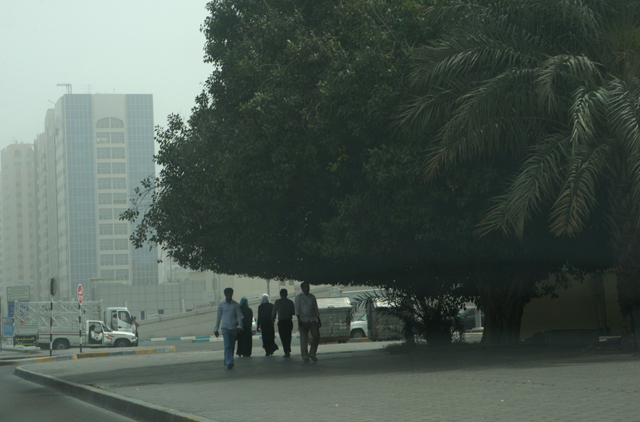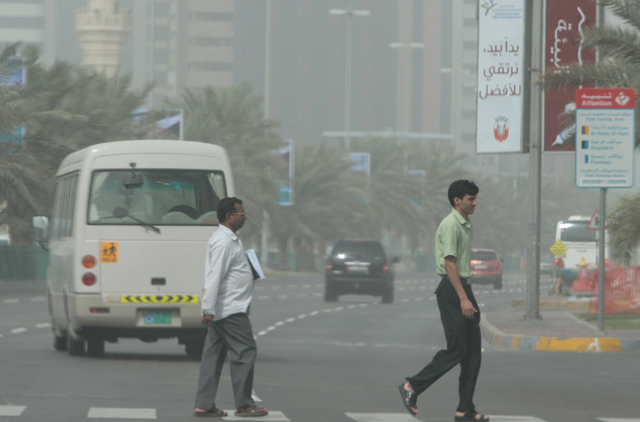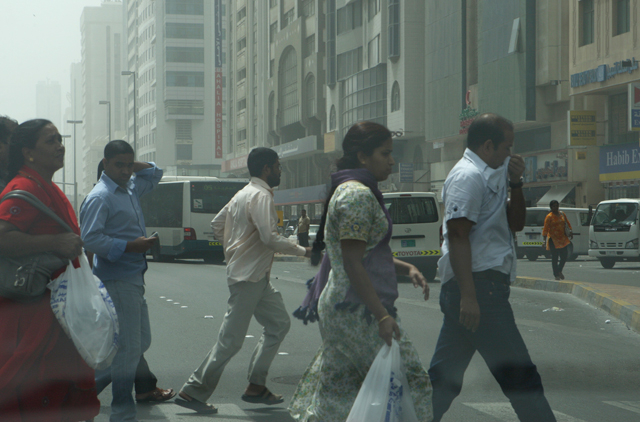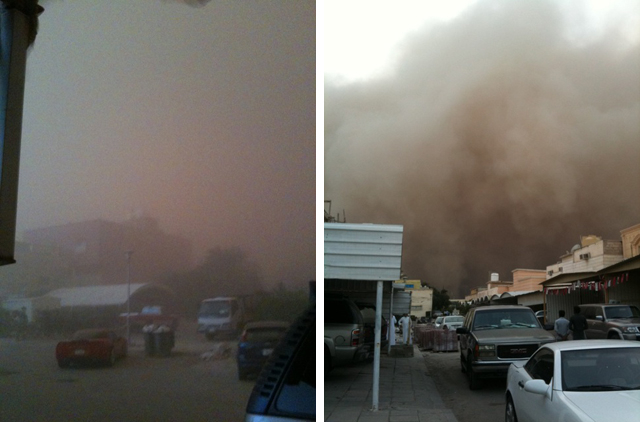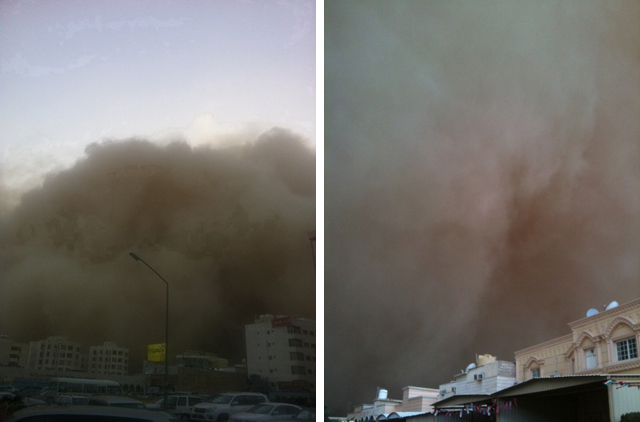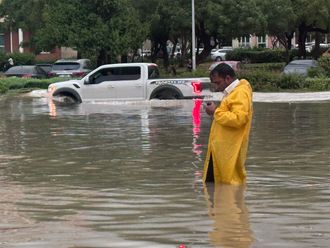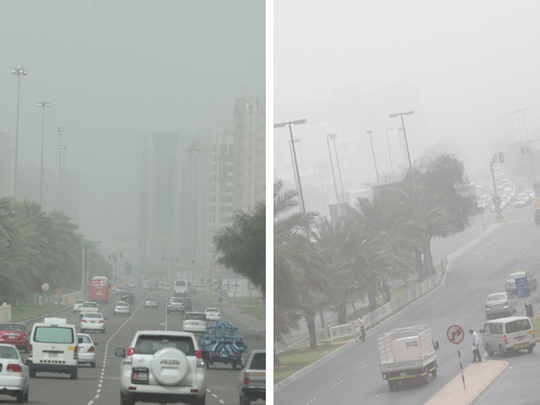
Al Ain: The sandstorm reduced the horizontal visibility from 2,000 to 4,000 metres in most of the mainland areas in the UAE, but did not disrupt the normal pace of life as it did in Kuwait and some parts of Saudi Arabia.
Flights arriving to and leaving Abu Dhabi has not yet been affected by the storm. Nevertheless, airlines have indicated that they are monitoring the situation and will make any flight adjustments as necessary.
"At this stage, Etihad flights operating to and from Abu Dhabi have not been affected by the weather conditions. [However], Etihad is monitoring the situation closely," a spokesperson from Eithad Airways said.
The National Centre of Meteorology and Seismology (NCMS) said in some western areas visibility went down to 100 metres in the UAE islands in the Arabian waters such as Delma and Al Hamra. "We expect the storm’s effects will end by Sunday evening," said a forecaster.
The condition could, however, be windy at least during the next two days in the open areas that might blow up sand.
The north-westerly winds would also bring moisture to the emirates. The forecasters expect an increase in humidity at night and early in the morning that could lead to scattered fog formation in some internal areas.
Sandstorm to hit UAE on Saturday
Some effects of the massive sandstorm, currently hitting Iraq and Kuwait, could reach up to the western region of the UAE on Saturday morning, forecasters said, alerting people living in the are to be aware of windy and dusty conditions.
A massive sandstorm has hit the southern Iraq and north-west of Kuwait on Friday, and has affected parts of eastern Saudi Arabia. The gradual movement of the storm is likely to affect Bahrain and Qatar as well.
The National Centre of Meteorology and Seismology (NCMS) in Abu Dhabi issued a weather alert saying the winds and dust may reach the western region of Abu Dhabi at around 10am on Saturday. Visibility will dip to 1,000 to 2,000 metres.
Forecasters said the wind speed over Iraq, Kuwait, and parts of Saudi Arabia is more than 80km/h. Visibility has severely been affected in some places as it has gone down to just 50 metres.
Pilgrims asked to be careful
People who are travelling to Saudi Arabia from the UAE in small cars, especially for Umrah, have been asked to be extremely careful as poor visibility and strong winds could cause a problem for them.
"It would be advisable for them to delay their travel for at least a day or two," said the forecasters. Road leading to Hafoof, a city in eastern Saudi Arabia and an important station on the Umrah route, and its surrounding areas could be buried in the sand at different places. Cars and small vehicles could stuck in the sand on the roads, said the forecasters.
Hazy, cloudy weather expected
Meanwhile, the national weather bureau has forecasted hazy and partly cloudy weather across the UAE. A marked drop in temperatures is expected in some parts of the country. Forecasters said the fall in temperature will be especially felt in the coastal and western areas.
The national weather bureau has warned people to stay away from the sea as winds would be stronger offshore. "We expect a rough sea today (Saturday)," the forecaster said.
Storm forces Kuwait to shut airport
Manama: Heavy winds pushing tonnes of dust enveloped much of Kuwait Friday evening, causing disruptions in several areas and forcing the civil aviation to shut down the airport.
"In view of bad weather conditions, dense dusty storm, and strong winds blowing in the country, all incoming flights were transferred to nearby airports while all outgoing flights were halted until weather conditions improve," Isam Al Zamil, the head of operations at the airport, said, quoted by Kuwait News Agency (KUNA).
Earlier, the authorities warned that the dust storm reduced visibility to less than 500 metres and that in some areas, "there is no visibility at all."
The condition is due to a dusty storm kicking up northwestern wind at a speed of more than 50 kilometres per hour, KUNA said.
With input from Habib Toumi, Bureau chief


